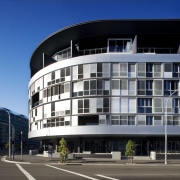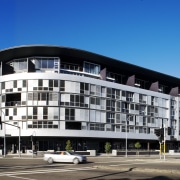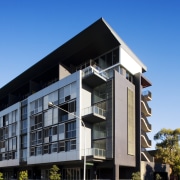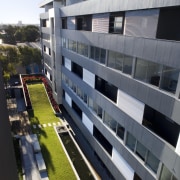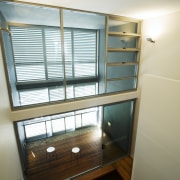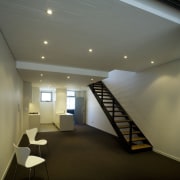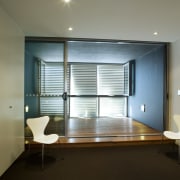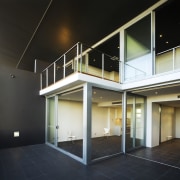Face of change
This apartment building's adjustable panels and shutters present an ever-changing facade to the street they also play a key role in passive air conditioning
Faced with a warming climate, and a worldwide imperative for energy efficiency, architects are reviving traditional cross ventilation as a logical, ecologically sound solution to regulating interior environments. But effectiveness can be dependent on wind direction, which could result in a swift, draughty moderation of temperature. Controlling air flow through the more subtle interplay of ambient air pressures may be an alternative for the green building industry of the future.
Coda, by architect Frank Stanisic, is a case in point an airy, slender, honeycomb apartment building set on a corner site in an inner-Sydney suburb. The sharp curve at the eastern end of the site was dictated by the routing of local trams in the early 20th century.
"Coda builds on this iconic form with a metallic louvre screen facade and cantilevered floating roof that closely follows the shape of the site," says Stanisic. "All apartments run the width of the building, with large, shaded, timber-decked balconies facing north to the sun and the city. The apartments all have generous balconies and the upper-level sky terrace apartments have 85m² of outdoor living space.
"Living areas in individual apartments have their warm, sunny outlook moderated by an environmental screen of operable aluminium louvres. This screen assists in shading the balconies and provides privacy from the street."
The seven-storey building comprises 44 apartments in all, together with ground-level shops and basement parking. All apartments are two storeys and include one-bedroom lofts, two-bedroom terraces, and three-bedroom sky terraces. Bedrooms are generally set back and above the living spaces. The other, shady side of the building provides access galleries for the individual apartments.
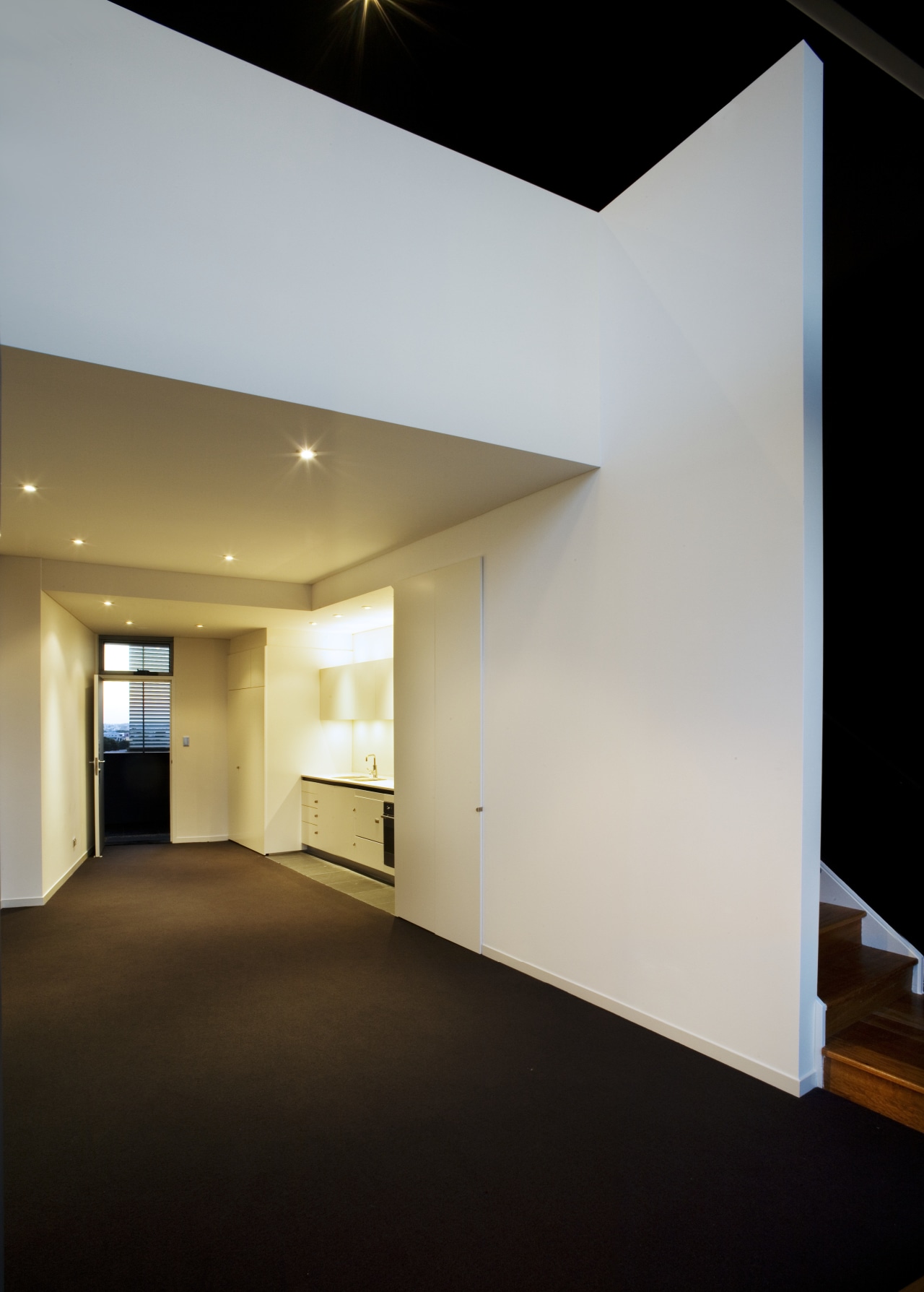
The building's operable plantation shutters are a major eco-friendly feature, and contribute more than direct shading to the regulation of Coda's interior temperatures. The entire building's design is a forward-looking response to passive air control, and the operable shutters play an integral part.
Essentially, the sun's warmth in summer on the north side of Coda creates a high-pressure zone which drags cool air from the low-pressure, cooler southern courtyard, south to north, via corridors, or pathways of air, that connect the open access galleries on the shady side of the building to the northern open sunrooms of the apartments. The cool air moves to occupy space taken up by the hotter, high-density air on the northern side of the building.
Narrowing the apertures with vents on the cool side of the building in summer draws the cool air swiftly into and through the apartment cross pathways.
Conversely, in winter, the heat trapped in the sunrooms behind sliding glass doors, from the lower-angled sun, radiates into the cooler, closed interior, avoiding the need for internal heaters.
The linking corridors and upstairs-downstairs nature of the apartments allow the building to breathe naturally like a giant honeycomb. Testament to the effectiveness of the design is the fact that the building's lower levels operate without electrical air conditioning.

Owners can manipulate the screens and folding glazed doors to personal preference altering not only the temperature of the individual apartments but also the look of the building as seen from the street.
However, passive control of interior temperatures is only one green aspect of the contemporary apartment block. The structure is designed to be serviced with only one lift rising to the southern access galleries.
"Elevators are a heavy drain on electricity and this design allows one lift to service all Coda residents around 100 people," says Stanisic. "Another ecological advantage includes recycling rain water from the roof for use in the gardens. This includes the large communal courtyard on the south side of the building."
Credit list
Architects
Construction
Electrical engineer
Landscape architect
Roofing
Shutters
Carpet
Ceilings
Lighting
Interior designer
Structural
Mechanical
Cladding
Facade design
Columns
Flooring
Wallcoverings
Paints
Elevator
Story by: Charles Moxham
Home kitchen bathroom commercial design

